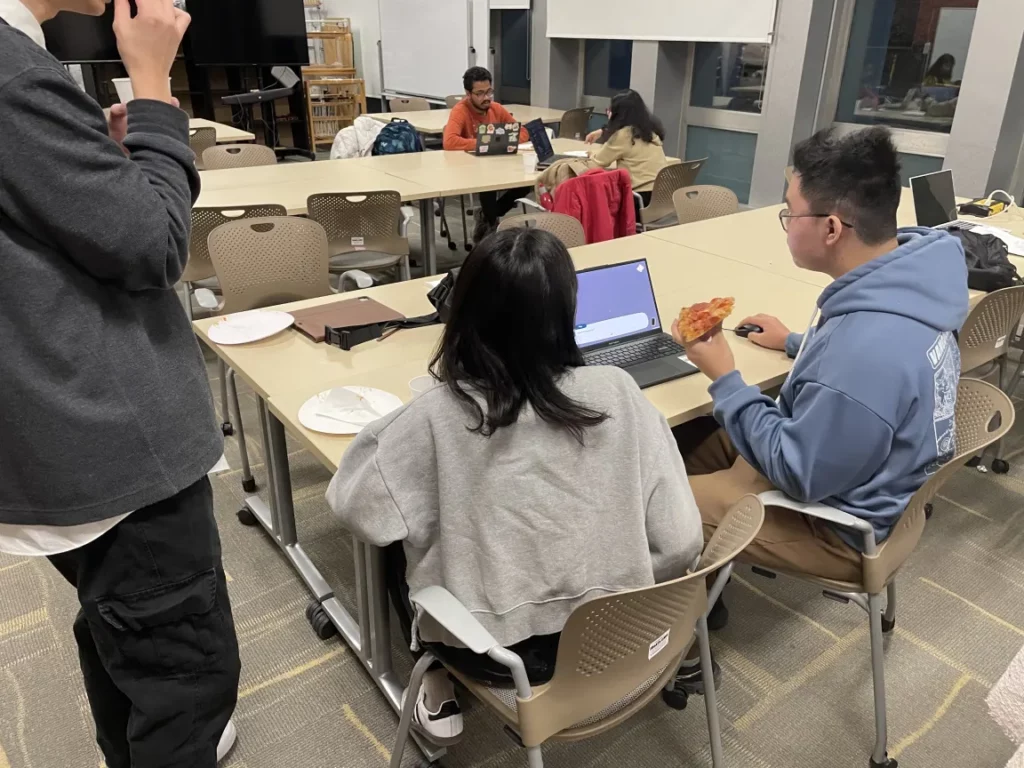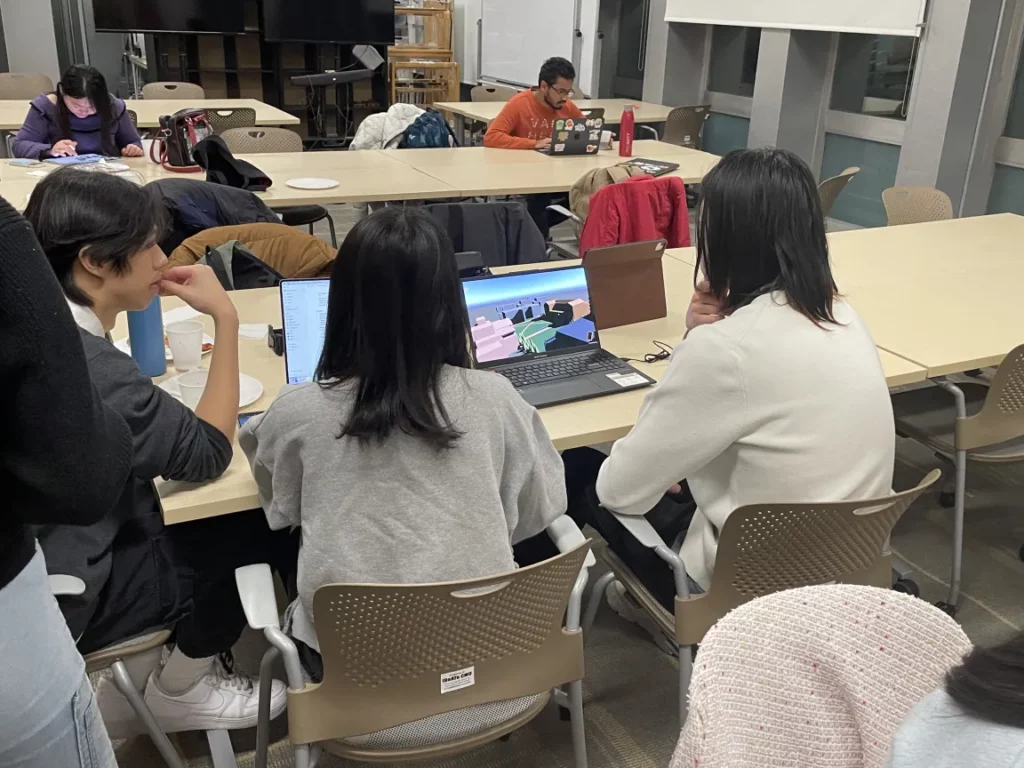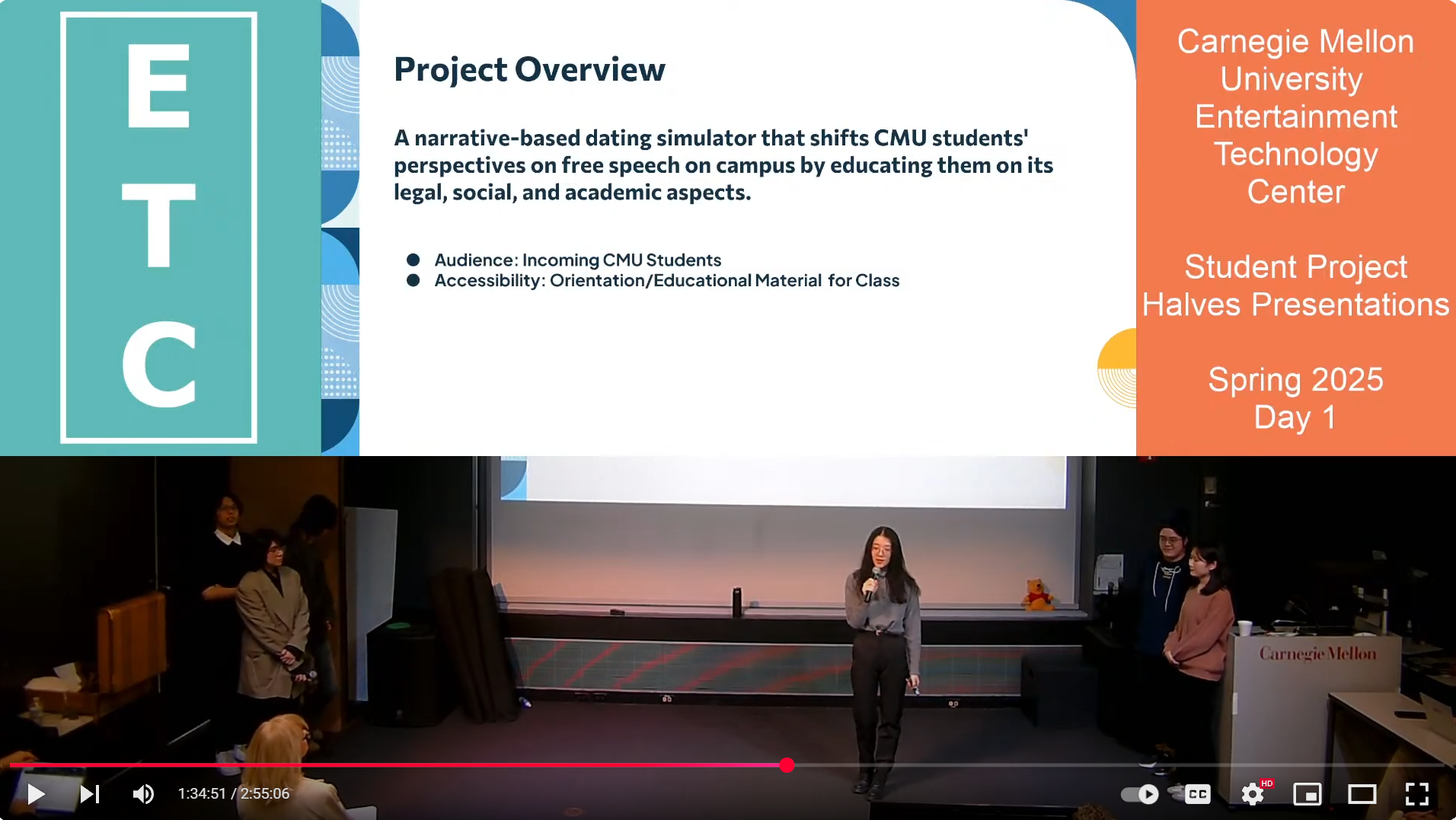Half Presentation & Playtest Night
After wrapping up our Half Presentation on Monday, we attended Playtest Night on Tuesday, where we gathered valuable feedback from seven playtesters. The insights we received helped us refine our direction and identify areas for improvement.

Playtest Feedbacks
Overview: Let the tester experience Day 1 narrative
Playtest scope: Day 1 dialog with text generation effects and clickable options
Objective:
- Find out if dialog-focused gameplay is effective to educate the players
- Find out if day 1 narrative effectively conveys the concept of freedom of speech.


1. Narrative & Concept Understanding
- Many testers found the narrative unclear at the beginning and lacked context.
- Players struggled to grasp freedom of speech concepts (e.g., Heckler’s Veto, academic freedom).
- The text was too complex for some players, making it harder to follow.
- Some players felt engaged, while others wanted more interactivity instead of just reading.
2. Character & Worldbuilding Issues
- Characters were not well introduced; testers wanted background information on them.
- Many didn’t understand who they were interacting with or why characters appeared suddenly.
- Character dialogue lacked distinction, making it difficult to tell them apart.
- Some testers suggested avatars or images to help differentiate characters.
3. Dialogue Choices & Interactivity
- Some testers struggled to choose responses, leading to long decision-making times.
- Players wanted more impactful choices with visible consequences.
- Some felt a lack of agency, saying they were witnessing events rather than influencing them.
- Suggested adding fake choices or humorous options to increase engagement.
- Some requested a dialogue history feature to review past conversations.
4. Theme Reinforcement & Player Engagement
- While some found dialogue effective in reinforcing the theme, others felt it was not strong enough.
- Players wanted visual indicators of how choices affected the story (e.g., emotional reactions).
- Some suggested cutscenes or mini-games to break up text-heavy sections.
- Testers wanted a clearer cause-and-effect link between characters and the theme of freedom of speech.
Next Steps & Improvements
1. Strengthen Narrative Clarity & Context
- Add background introductions for characters and the setting at the start.
- Provide a brief overview of the player’s role in the story.
- Include simpler language or highlight key terms with bold/color to improve comprehension.
2. Improve Character Differentiation
- Introduce avatars or character portraits to make characters more distinct.
- Add name labels and relationship indicators to clarify roles.
- Include a monologue or internal thoughts before dialogues to give players context.
3. Enhance Player Agency & Interactivity
- Implement meaningful choices with visual feedback (e.g., character expressions, immediate reactions).
- Consider fake choices or comedic responses to keep players engaged.
- Add a dialogue history feature for players to revisit past interactions.
- Allow more interactions on the map (e.g., clickable elements, side conversations).
4. Reinforce Theme with More Engagement Tools
- Integrate mini-games or interactive elements that illustrate freedom of speech concepts.
- Use cutscenes to show major story events instead of relying only on text.
- Make the impact of choices clearer, potentially using branching paths or reaction animations.
Production Workflow Optimization
Beyond gameplay and design improvements, we also recognized the need to optimize our production workflow. Since Half Presentation and Playtest Night happened back-to-back, we had to rush the preparation process, which created challenges in asset integration.
Our solo programmer, Jack, provided critical feedback, pointing out that many assets were submitted at the last minute, leaving him with insufficient time to properly implement and test them. This highlighted a flaw in our current pipeline, which we agreed needs restructuring.
To improve efficiency and reduce last-minute pressure, we established a new production workflow:
- Weekly builds will be released every week to ensure consistent progress.
- All assets and content updates must be submitted at least two days before integration into Unity.
- This approach will help motivate team members to stay engaged, maintain a clear timeline, and reduce workload stress on the programmer.
Next Steps
On Friday, we will meet with our advisors to report on our progress and receive faculty feedback on our Half Presentation. Their insights will guide us in refining our design, production strategy, and overall approach moving forward.
